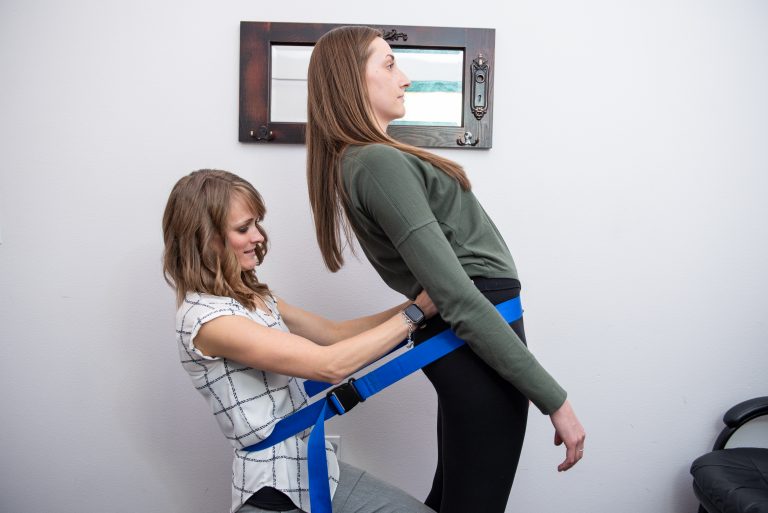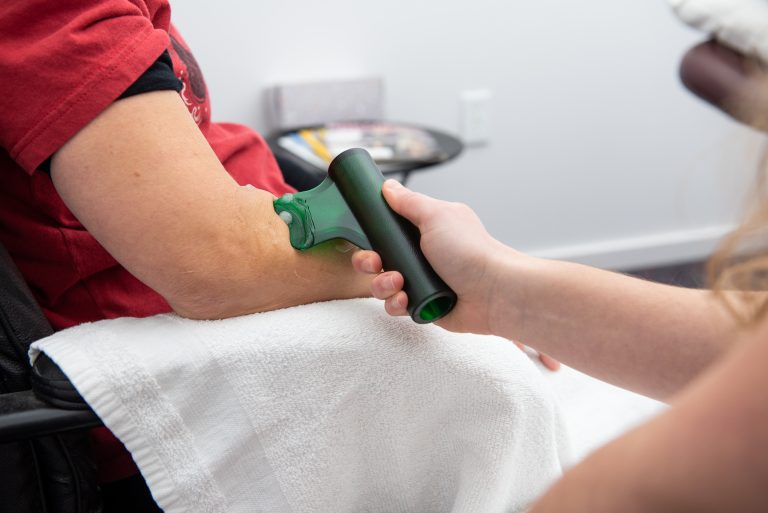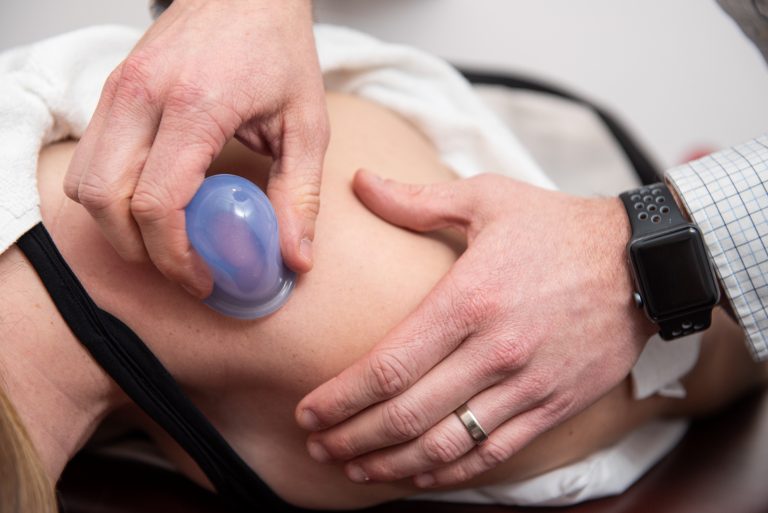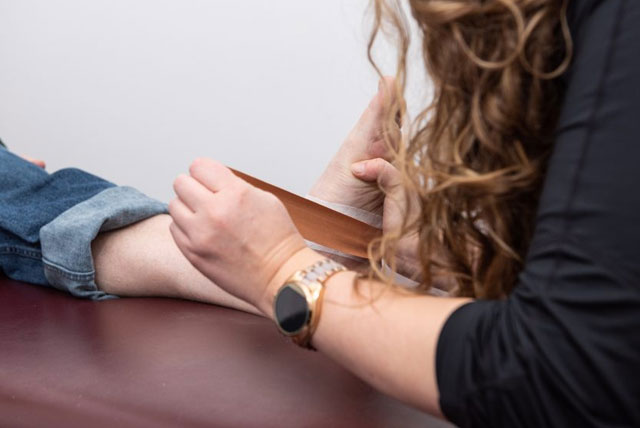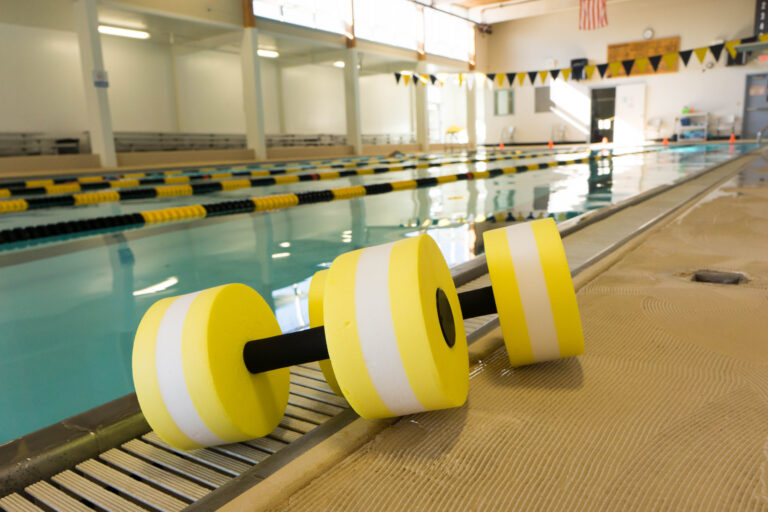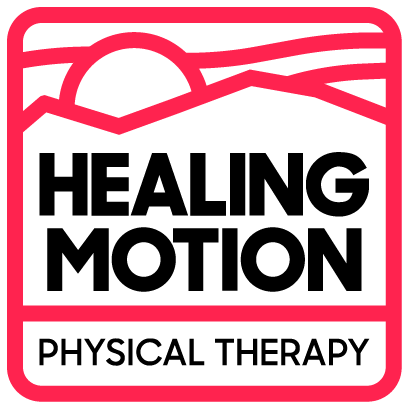Manual therapy techniques are highly skilled, passive interventions applied to joints and soft tissue. They are a vital component of the rehabilitation process, used to modulate pain, induce relaxation, increase tissue extensibility, and restore normal range of motion. Common techniques include soft tissue mobilization (massage), traction, passive range of motion, joint mobilization, and manipulation.
Mulligan is a manual therapy concept that is centered around a mobilization with movement. Our physical therapists trained in these techniques use very light force to re-position joints. If indicated, the result of the mobilization is an immediate, pain-free, and long-lasting restoration of movement.
Blood Flow Restriction (BFR) is a technique that combines low intensity exercise with the occlusion of blood flow to increase muscle mass and strength. To stimulate these muscular adaptations, a belt or cuff is applied like a tourniquet to the proximal portion of an extremity to occlude blood flow.
Instrument-Assisted Soft Tissue Mobilization (IASTM) is a technique in which therapists use ergonomically-shaped plastic or metal hand-held tools to impart a mechanical force to your soft tissues. It desensitizes the area, releases myofascial restrictions, and increases circulation to promote healing.
Myofascial decompression, more commonly known as cupping, utilizes suction to lift and separate superficial tissues from underlying tissues. This allows for increased blood flow to the area to promote healing and a decrease in soft tissue restrictions such as myofascial adhesions and trigger points.
We utilize Kinesiotape, rigid tapes like athletic tape and Leukotape, and bracing to restore normal movement patterns and decrease symptoms associated with your desired activities.
Your entire treatment plan is customized around getting you back to the activities you need to and love to do. Rehabilitation at Healing Motion is functional. You sit at a desk all day? Then we will give you ergonomic recommendations and help you with your sitting posture. You work on the farm? Then we will correct your mechanics and improve your strength so that you can bend over and lift without symptoms.
Pain can at times be so significant that it impairs your ability to tolerate the movement and strengthening that you need to do in order to reduce your pain. It is a vicious cycle, but one that aquatic therapy can get you out of. Aquatic therapy is essentially physical therapy in the water, which has many therapeutic qualities difficult or impossible to replicate on land. The buoyancy water supplies allows us to provide earlier intervention for faster symptom relief.


